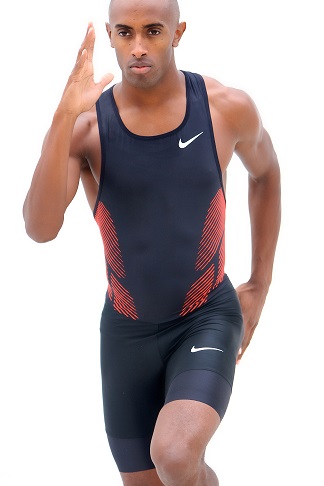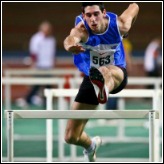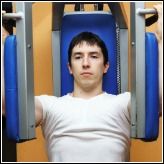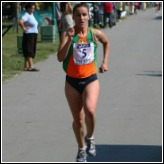Speed Training Techniques For Maximum Speed
Here is a bold statement: “through the development of speed training techniques, a sprinter of lesser ability can beat a more gifted runner”. Sprinting is as much a complex skill as golf or a track and field throwing event and like most skills it has to be learnt. Even the best sprint coaches are committed to staying in touch with the latest thinking on speed training and they do this to gain a competitive edge on their rivals.

Of course we all know that elite sprinters are predisposed with a higher proportion of fast twitch muscles fibres than slower runners. And you might be forgiven for thinking that they have little need for speed training techniques. However, over the years studies have looked at the technical difference that makes the difference in how super fast athletes do what they do.
The evidence suggests that all elite level sprinters perform a set of actions/movements in the maximum speed phase of their running which sets them apart from the rest. It would seem then, that running technique plays as much a part in the maximum speed phase of a sprint, as physical conditioning.
So, what do elite sprinters do that most others don’t?
Well, much of the thinking about sprinting technique is centred round the concept of “front-side” and “back-side” mechanics. This concept has become the sprinting fraternity’s Holy Grail of how to relate to the mechanics of efficient sprinting.
Speed Training Techniques
Let’s look at “front-side” and “back-side” mechanics and the sequence of events which makes up the running stride – the “running gait cycle” so to speak. If you imagine the runner’s body - as they run, their legs perform certain actions in-front of the body while certain other actions are performed behind the athlete’s centre of mass (CM). Current research has found that the actions performed in-front of the athlete’s CM have a greater positive effect on the quality of the running stride than those performed behind the body. To explain this further, let’s look at the elements of the running gait cycle. It is composed of the following phases:
- Toe-off
- Heel recovery
- Initial contact/Stance
Toe-off
If we look at this in real time, the toe-off phase begins as the stance phase ends. Toe-off is achieved by plantar flexion or push off of the foot. As soon as toe-off is achieved the foot is dorsi-flexed (held toe toward the shin). However, the plantar flexion or push off action of the toe-off phase shouldn’t be laboured. If this phase is over emphasized, you will begin to put the emphasis on back-side mechanics (which is not where our focus should be).
An emphasis on the back-side will extended the heel recovery phase of the stride which will require the leg to pass through a longer trajectory resulting in a slower stride frequency.
Heel Recovery
The heel recovery phase begins immediately after the foot leaves the ground at toe-off. Heel recovery is part of that twilight realm of being part of the back-side mechanism but also extremely important to front-side mechanism. The recovery phase is illustrated by:
- The leg folding up under the buttocks after toe-off. The knee/thigh is raised to a point where it is parallel with the ground, slightly below 90 degrees.
- The dorsi-flexed foot passes over the knee joint of the stance leg.
- The knee is then blocked at this point. This forces the lower leg (shin) to swing out before being driven down to the ground. Some coaches try to avoid the lower leg being swung out and fail to understand that this is a natural phenomenon to work with rather than one to avoid.
Initial contact/Stance
As the lower leg swings out, the upper leg (thigh) is being driven down and backwards towards the ground. As the foot makes contact with the ground, this becomes the initial contact and support phase of the next stride and last approximately 90 milli-seconds. In conjunction with point 3 (above), this phase of the sprinting cycle is referred to as front-side mechanics. Its importance to the sprinting cycle is obvious when we realize that most of the force for the preceding stride is generated at the initial contact and stance phase of the sprinting cycle.
It is also important to understand that the foot must be held in a dorsi-flexed position as it is driven actively to the ground. The sprinter’s foot should strikes the ground with a negative foot speed – this mean that the foot needs to be travelling in an opposite direction to the mass of the body as it strikes the ground. This will serves to minimize the negative breaking forces of ground contact
As this action continues, it coincides with the toe-off and heel recovery phase of the opposite leg – and so the cycle continues.
Hip Position In Sprinting
The actions of the leg are supported by the position of the hip. For efficient leg movements the pelvis of the sprinter should be neutral. From this position the athlete will demonstrate a tall running posture and are able to use their limbs optimally. If the hip is tilted forward, the sprinter will tend to over-emphasize back lift and increase the breaking forces in the initial contact and stance phase of the running gait cycle.
Examples of drills that will help you develop a good speed training technique can be found else where on this site. If you practice these speed training techniques, you too will be able to improve your maximum sprinting speed.
Sign Up For The Latest Track And Field News And Improve Your Athletic Performance!
From
"Speed Training Techniques For Maximum Speed" Back To "Faster, Stronger,
Better – Your Shortcut To Improved Athletic Performance"
Learn more about speed training







